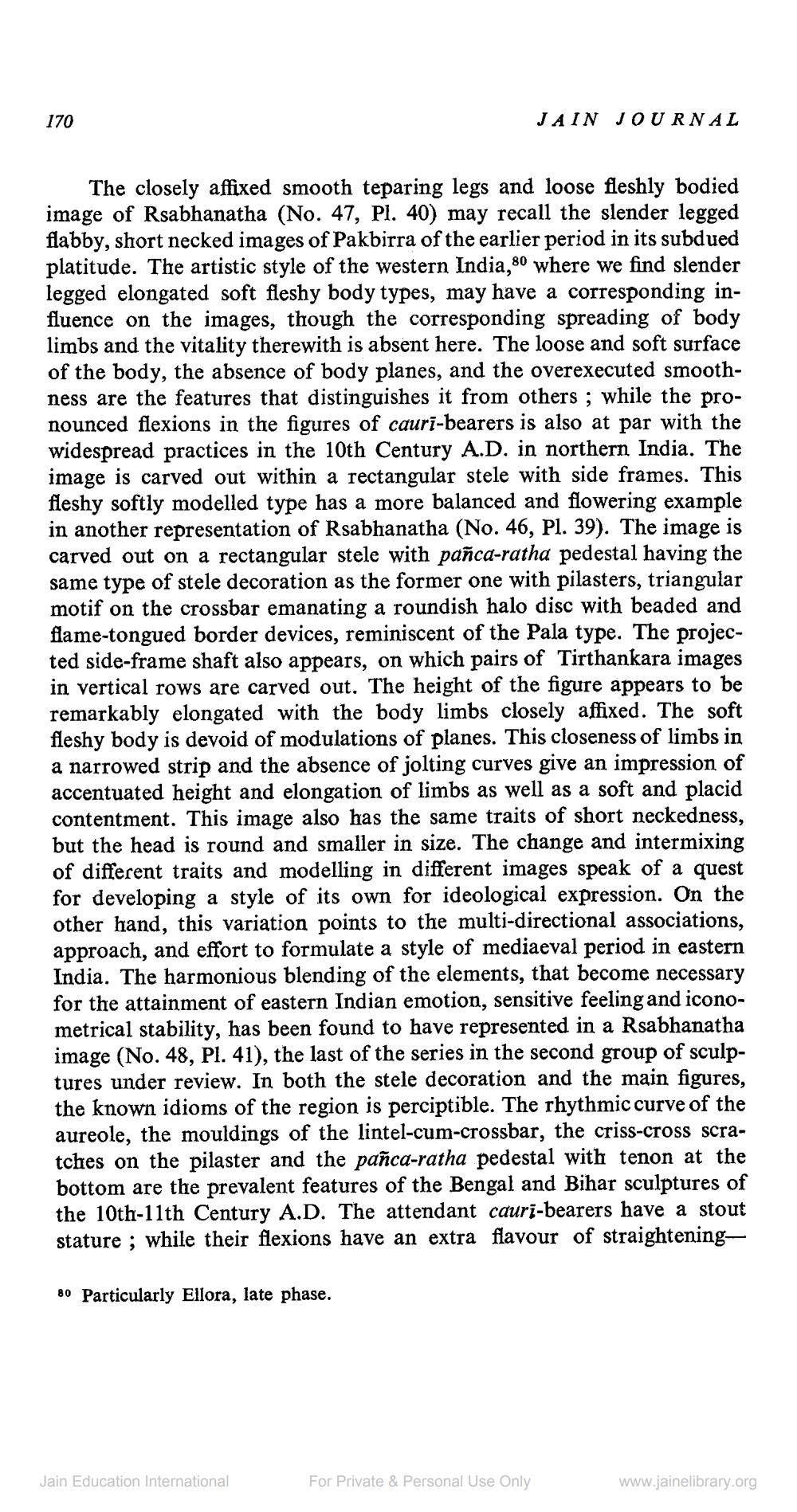________________
170
JAIN JOURNAL
The closely affixed smooth teparing legs and loose fleshly bodied image of Rsabhanatha (No. 47, Pl. 40) may recall the slender legged flabby, short necked images of Pakbirra of the earlier period in its subdued platitude. The artistic style of the western India, 80 where we find slender legged elongated soft fleshy body types, may have a corresponding influence on the images, though the corresponding spreading of body limbs and the vitality therewith is absent here. The loose and soft surface of the body, the absence of body planes, and the overexecuted smoothness are the features that distinguishes it from others; while the pronounced flexions in the figures of caurī-bearers is also at par with the widespread practices in the 10th Century A.D. in northern India. The image is carved out within a rectangular stele with side frames. This fleshy softly modelled type has a more balanced and flowering example in another representation of Rsabhanatha (No. 46, Pl. 39). The image is carved out on a rectangular stele with pañca-ratha pedestal having the same type of stele decoration as the former one with pilasters, triangular motif on the crossbar emanating a roundish halo disc with beaded and flame-tongued border devices, reminiscent of the Pala type. The projected side-frame shaft also appears, on which pairs of Tirthankara images in vertical rows are carved out. The height of the figure appears to be remarkably elongated with the body limbs closely affixed. The soft fleshy body is devoid of modulations of planes. This closeness of limbs in a narrowed strip and the absence of jolting curves give an impression of accentuated height and elongation of limbs as well as a soft and placid contentment. This image also has the same traits of short neckedness, but the head is round and smaller in size. The change and intermixing of different traits and modelling in different images speak of a quest for developing a style of its own for ideological expression. On the other hand, this variation points to the multi-directional associations, approach, and effort to formulate a style of mediaeval period in eastern India. The harmonious blending of the elements, that become necessary for the attainment of eastern Indian emotion, sensitive feeling and iconometrical stability, has been found to have represented in a Rsabhanatha image (No. 48, Pl. 41), the last of the series in the second group of sculptures under review. In both the stele decoration and the main figures, the known idioms of the region is perciptible. The rhythmic curve of the aureole, the mouldings of the lintel-cum-crossbar, the criss-cross scratches on the pilaster and the pañca-ratha pedestal with tenon at the bottom are the prevalent features of the Bengal and Bihar sculptures of the 10th-11th Century A.D. The attendant cauri-bearers have a stout stature ; while their flexions have an extra flavour of straightening
80 Particularly Ellora, late phase.
Jain Education International
For Private & Personal Use Only
www.jainelibrary.org




